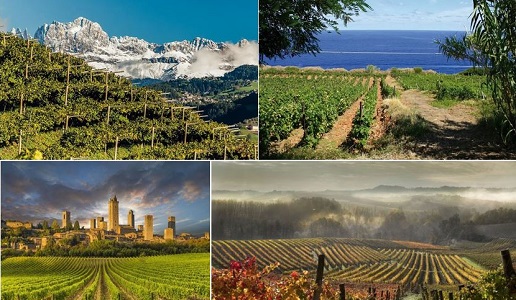Wine, much more than just a word

The word “wine” encompasses thousands of different nuances, with many different wines produced from extremely different grape varieties and often from vastly different places. An immense geography of organoleptic sensations.
After more than 40 years of being involved with wine, I have heard much more than my fair share of proclamations, declarations and arguments regarding irrefutable truths about wine. So allow me to shed some light on the subject. A Passito from Pantelleria, golden and sweet with aromas of dried apricots; Barolo, red, bold, sometimes a tad edgy and dry; and Franciacorta, effervescent, pale yellow, very dry: all three are “wines”. I do not believe there are any other products we can put into our mouths that have the same name but are so different from each other. And although cheese comes close, a mozzarella is nothing like Parmigiano, gorgonzola is different from Pecorino Romano, the variations are not as vast as they are for wine, which comes in thousands of different versions, something like Plato’s World of Being.
In Italy alone there are more than 500 wines with a DOC (Controlled Designation of Origin) quality classification and an equal if not greater number of different grape varieties, with almost every town producing its own wine which the locals consider to be the best wine in the world. And if you dare to question this then you are just a glutton for punishment and insults.
“Barolo is nothing, my uncle’s Aglianico, now that is a great wine”; “Forget French wine (as if there is only one type), in Veneto we have much more and Prosecco is just as good as Champagne and it costs less”.
The press media is not immune to taking similar stands and every year we hear and read triumphant reports about how Italy produces the most wine in the world and thus beats France. Unfortunately, the French, with a more or less similar level of production, have a turnover from wine almost double that of Italy. But then again, everyone knows the French are good at marketing themselves. As for quality… Italians think they are better than everyone else, even if this is not true. But the French, too, are not exactly kind when it comes to Italian wine, considering them to be inferior or second class at best. This not to mention the expression “cheap and cheerful” which many British and American wine lovers use to define most Italian wines and this says something in itself.
These are all, obviously, commonplace generalizations as is the term “Italian wine”. This is simply because “Italian wine” does not exist. There exists, on the other hand, thousands of wines that are much different from each other and thus cannot be defined by such a generic term. And they are certainly not “just for experts” or only “something to drink”. Italian wines represent the country’s traditions, its different climates and even landscapes.
After so many years of tasting, evaluating and describing thousands of wines, when I taste one now the first thing I ask myself is where could it have come from. From a vineyard near the sea, surrounded by Mediterranean bushes, perhaps with even some sand in the soil? Or is it from a high altitude, where the climate is cooler, the soil has more gravel and the pitch is steeper?
The aromas, flavors and even the colors help me determine the origin. It is a fun game as well as the only way that I know to tackle such a diversified subject, not to mention complex. The truth is we are not dealing with physics or theoretical philosophy, just different wines, of which there are an amazing number and they often come from very different areas and are produced with extremely different grapes. All this in an immense geography of organoleptic sensations.

 Italiano
Italiano







